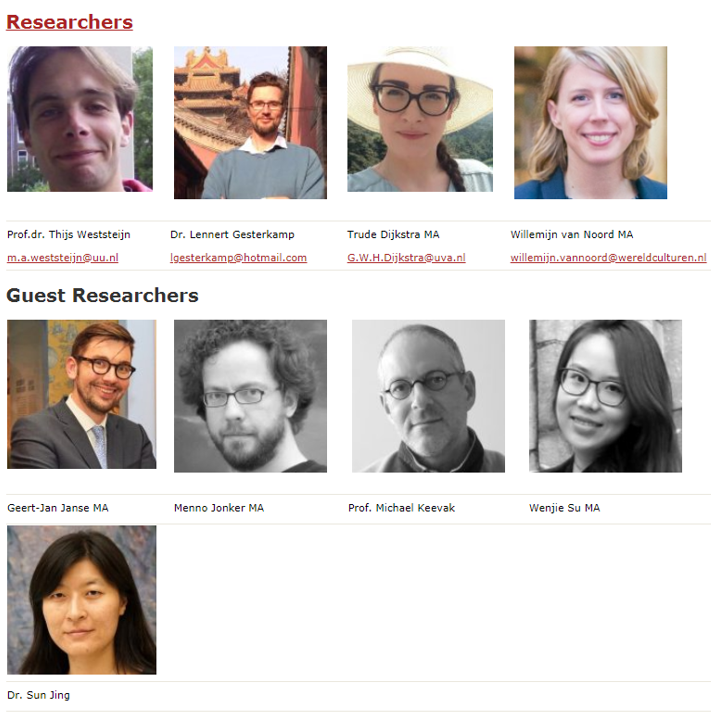The Chinese Impact: Images and Ideas of China in the Dutch Golden Age
The Chinese Impact (funded by NWO-Vidi Innovative Research Incentive Scheme, 2014-2019) examines images of China in the Low Countries in the seventeenth century. An interdisciplinary group of art historians, historians, and sinologists explores how early cultural contacts gave rise to images that developed into stereotypes, some of which remain relevant to the present day. The European perspective is complemented with an Asian one: How did the Chinese see the Dutch?
China holds a special place in the European imagination. The Chinese economy, politics and culture are increasingly attracting foreigners, but preconceptions and stereotypes often distort the European perspective. This is not a new dynamic. It is rooted in the first period of intensive contacts, the 17th century, when the Low Countries were the European hub for products from and images of China, shaping Western conceptions that persist to the present day.

This research program pioneers the comprehensive study of China’s impact on low and high culture in the Netherlands, from the Chinese ceramics in Rembrandt’s studio to the popular comparison of Spinoza to Confucius. It establishes how the self-image of the fledgling Dutch Republic was honed in the Chinese mirror, from Delftware imitations of porcelain to ideals of religious toleration and republicanism. Historians have neglected the 17th-century Low Countries because they failed to analyze art and ideas in an integrated manner. Only interdisciplinary study does justice to the mutually dependent images by craftsmen and scholars from the Netherlands which were widely influential. Understanding the development of these popular stereotypes enlightens Chinese-Western relations that continue to be relevant in a globalized world.
Main sub-projects:
Trude Dijkstra, The Chinese Imprint: Printing and Publishing the Middle Kingdom in the Dutch Republic, 1595-1700
Willemijn van Noord, Materialising China: Material culture and perceptions of China in the Dutch Republic, 1665-1721
Lennert Gesterkamp, Red-Haired Barbarians: Chinese Images of the Dutch and Other Foreigners, 1650-1800
Thijs Weststeijn, The Chinese Challenge: the Middle Kingdom in the Low Countries, 1601-1721
Partner institutions:
Frans Hals Museum, Haarlem (site of the exhibition curated by The Chinese Impact in 2017)
National Institute for Advanced Humanistic Studies, Fudan University, Shanghai (host of the dialogue seminar Entangled Cultural Histories, 2016)


